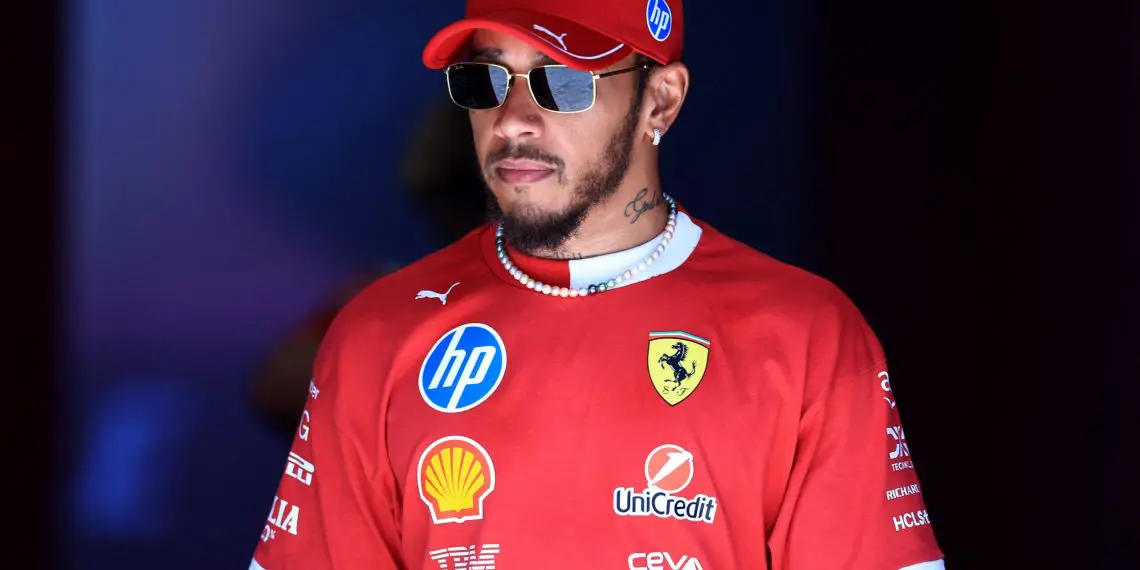
Jeddah, Saudi Arabia – The high-speed Corniche circuit in Jeddah played host to another perplexing weekend for Lewis Hamilton and Ferrari, exposing dramatic struggles and inconsistencies that have plagued the seven-time world champion in the early stages of the 2025 Formula 1 season. While teammate Charles Leclerc secured a valuable podium finish, Hamilton languished in seventh, a considerable distance behind and visibly frustrated by his lack of pace and car feel.
The Saudi Arabian Grand Prix weekend began with Hamilton expressing concerns about even reaching the top ten in qualifying, a stark contrast to the optimism surrounding Ferrari’s overall potential. Despite ultimately qualifying and finishing in seventh place, the manner in which he achieved this result, and the significant gap to Leclerc, painted a concerning picture.
Throughout the race, Hamilton reported a car that was “just sliding around,” lacking grip and suffering from both understeer in the initial stint and excessive tire degradation later on. His post-race comments were blunt, stating there was “nothing positive to take” from his experience and ominously predicting that this “painful” feeling with the car could persist for the remainder of the season. When questioned about feeling comfortable at any point during the race, Hamilton’s terse “No, there wasn’t one second” spoke volumes about his disconnect with the SF-25 in Jeddah.
The stark contrast in performance between the two Ferrari drivers was a key talking point. Leclerc, starting one place ahead in fourth, managed to climb onto the podium, demonstrating the inherent pace within the car. This disparity has led to questions about whether the SF-25’s characteristics are notSuited to Hamilton’s driving style, or if there are specific setup challenges he is struggling to overcome.
Ferrari Team Principal Fred Vasseur mounted a robust defense of Hamilton after the race, dismissing any talk of a “dramatic” dip in form as “f****** b******t.” Vasseur insisted the team is “2000 per cent behind him” and is working diligently to find solutions to the balance and tire overheating issues Hamilton is experiencing. He drew parallels with Max Verstappen’s relatively low finish in Bahrain, suggesting that Hamilton’s performances might be under a different level of scrutiny.
However, Hamilton’s own words paint a more concerning picture than Vasseur’s defiant support. The champion’s inability to pinpoint a specific issue, stating he was “just fighting the car every corner,” suggests a more fundamental struggle to gel with the SF-25. This follows a pattern seen in previous races this season, where flashes of pace, such as his Sprint victory in China, have been interspersed with underwhelming Grand Prix performances.
The inconsistencies in Hamilton’s weekends raise questions about the SF-25’s operating window and the team’s ability to consistently place the car within it for both drivers. While Ferrari has lauded the SF-25 as a significant evolution, designed to maximize development potential, unlocking that potential consistently across different drivers and circuits appears to be an ongoing challenge.
The “fiasco” in Jeddah, as some are labeling Hamilton’s weekend, underscores the complexities of a driver switching teams after such a long and successful partnership. While the talent and experience of a seven-time world champion are undeniable, the nuances of a new car and team environment can take time to master. However, Hamilton’s increasingly pessimistic pronouncements suggest that the adaptation process with the SF-25 might be more arduous than initially anticipated, casting a shadow over his and Ferrari’s aspirations for the 2025 season. The coming races will be crucial in determining whether the team can unlock Hamilton’s potential and address the “pain” he is currently exper
iencing.
Be the first to comment